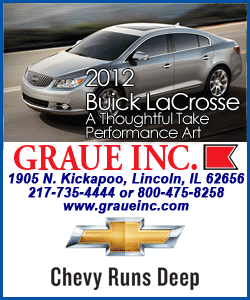 Tuesday evening, city engineer Darren Forgy presented a
variety of plans for the bridge and asked the council to make a
choice as to what to do. Tuesday evening, city engineer Darren Forgy presented a
variety of plans for the bridge and asked the council to make a
choice as to what to do.Included in his presentation were six
options: three that involved keeping the bridge in place and three
that involved removing the bridge completely.
Melody Anderson was the first to speak on the topic. She said she
had reviewed all the options and found the first to be the most
desirable from her point of view.
Option 1 includes keeping the bridge but modifying it so that
vehicular traffic may not cross it. This would allow for walkers and
bicyclists to still use the bridge. Creating this walkway would
involve closing off the entry to the bridge on both sides by using
large, heavy decorative planters.
Anderson said the one thought she had concerned motorcycles. She
wondered if there was any way to keep them from driving on the
bridge.
Forgy said he really didn't know how they could accomplish that.
He suggested perhaps the only option would be a sign to that effect.
However, it was also suggested that a sign would serve as an
invitation to some who choose not to go by the rules.
Anderson said even so, she was favoring option 1. She noted that
it would save the city $100,000 over demolition.

Mayor Keith Snyder reviewed what was available, saying that of
the six options, three took the bridge away and three kept it. He
wondered if anyone was in favor of taking the bridge out. Stacy
Bacon indicated that would be her preference.
Snyder asked if anyone was in favor of keeping the bridge, and
three aldermen raised their hands.
Newly appointed Alderman Bruce Carmitchel asked who would be
responsible for the maintenance of the walking bridge if that is
what the city went with.
Snyder said the city would be responsible.
Drawing from his career experiences, Carmitchel said that
something similar had been done in Chicago, and the city came to
regret it. He said some of the problems encountered included keeping
the areas cleaned of trash, and then other maintenance had to be
continually done.
Questions and comments were made about the bridge's condition at
this point: Was there a chance someone could get hurt, and would the
city be liable?
Forgy responded to some of this discussion, saying that the cost
of option 1 included money to make repairs to the bridge surface so
that it would be safe.
Marty Neitzel then asked if she should put option 1 on the
agenda, but Bacon objected. She said her preference was option 6 but
without the planters.
Option 6 would remove the bridge and place the heavy planters at
the edges to stop traffic. Bacon said the idea of spending $10,000
on such planters was, to her, ridiculous. David Armbrust said he
agreed with Bacon.

Anderson countered that something would have to go there, and the
discussion moved to putting up a guardrail with a reflective sign,
or it was suggested two posts with a cross post and a reflective
sign or a red triangle, which according to street superintendent
Tracy Jackson could be done for under $400.
Bacon said she liked that idea better, but Jackson also suggested
something made of wrought iron that might be more decorative. Forgy
said, though, that whatever they put in would have to be sturdy
enough to stop a vehicle, so as to prevent someone from driving off
into the creek. He also added a berm to the list of suggestions.
[to top of second column] |

Armbrust addressed what was done at the hospital with just a
couple of posts and a sign and said that was intended to stop
traffic from going into the ditch. He said he just didn't see
putting money into this, but Anderson countered by saying: "Then
carrying that theme further, why take it out?"
Neitzel, still looking for a motion for the agenda, then asked if
they could go with option 1 but take away the planters and add a
guardrail.
Tom O'Donohue then said there were several questions in play:
First, should they keep the bridge or do away with it? Second, was
there a real concern for the aesthetics? And finally, was there a
need for a cul-de-sac?
O'Donohue said it seemed the cul-de-sac was not needed, but
Snyder said that without it people were left to turn around in
residents' driveways.
Anderson countered that had been going on for two years now
anyway.
Anderson continued with the analysis of the options, saying it
looked like option 1 and option 6 were really the only choices. She
reminded the council that when this topic first came up for
discussion quite some time ago, the estimated cost topped $300,000.
They worked to bring the cost down to $100,000, and now they had a
plan that would bring the cost down to $20,000.
She asked the council: "Why are we worried about this? If we are
going to all the effort to plant flowers and make things look nice,
I don't know why when we looked at this from starting out as a
$300,000 project down to a $100,000 project, and now we're down to
$20,000 to $30,000 project, that we shouldn't invest a little bit in
the way our city looks. Throwing up a guardrail, whether it is on
Oglesby, or Woodlawn, or Fifth Street, or it's on First Street -- I
think we're foolish to do that when we're trying to make things look
decent."
She continued: "We have already cut back on this enormously. I
don't think that we have to get so cheap that it has to be ugly."

Snyder then brought the discussion to a close, saying: "We've
talked about Oglesby for a long time." He concluded that the motion
should be option 1 and that the language could say "with decorative
restraint" rather than being specific.
The motion will be on the Monday night agenda, with expectation
of a vote. The city council does have the right to table any item on
the agenda they feel they are not ready to deliver a decision on.
[By NILA SMITH]
Past related articles
-
Feb. 23, 2011 --
Oglesby Avenue bridge needs to be replaced
-
Sept. 14, 2011 --
Street projects, bridges and budget
constraints top concerns for city aldermen
-
Feb. 29, 2012 --
City discusses fate of Oglesby Avenue
bridge
-
March 31, 2012 --
City looks at options for Oglesby Avenue
bridge
-
Aug. 18, 2012 --
City prepares to approve infrastructure
and sewer projects
-
Aug. 31, 2012 --
Forgy: Postpone certain large projects,
develop 5-year infrastructure plan
-
Sept. 26, 2012 --
Aldermen question engineering costs for
Oglesby Avenue bridge
-
Oct. 11, 2012 --
Forgy explains the role of a city engineer
to aldermen
-
Nov. 30, 2012 --
City: Talks continue on what to do with Oglesby bridge

|